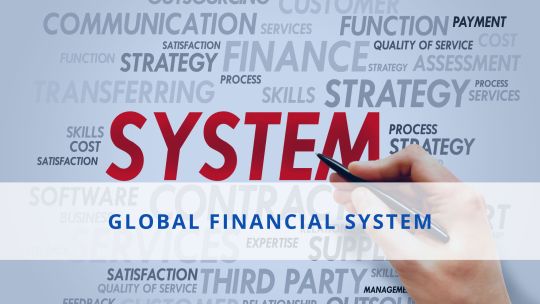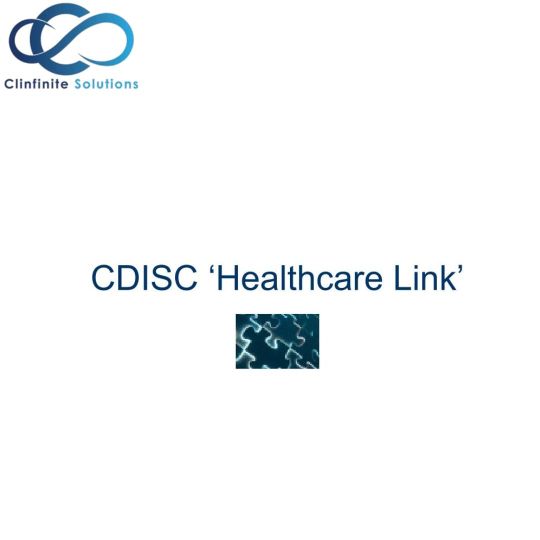#interoperability mandates
Explore tagged Tumblr posts
Text
An interoperability rule for your money

This is the final weekend to back the Kickstarter campaign for the audiobook of my next novel, The Lost Cause. These kickstarters are how I pay my bills, which lets me publish my free essays nearly every day. If you enjoy my work, please consider backing!

"If you don't like it, why don't you take your business elsewhere?" It's the motto of the corporate apologist, someone so Hayek-pilled that they see every purchase as a ballot cast in the only election that matters – the one where you vote with your wallet.
Voting with your wallet is a pretty undignified way to go through life. For one thing, the people with the thickest wallets get the most votes, and for another, no matter who you vote for in that election, the Monopoly Party always wins, because that's the part of the thick-wallet set.
Contrary to the just-so fantasies of Milton-Friedman-poisoned bootlickers, there are plenty of reasons that one might stick with a business that one dislikes – even one that actively harms you.
The biggest reason for staying with a bad company is if they've figured out a way to punish you for leaving. Businesses are keenly attuned to ways to impose switching costs on disloyal customers. "Switching costs" are all the things you have to give up when you take your business elsewhere.
Businesses love high switching costs – think of your gym forcing you to pay to cancel your subscription or Apple turning off your groupchat checkmark when you switch to Android. The more it costs you to move to a rival vendor, the worse your existing vendor can treat you without worrying about losing your business.
Capitalists genuinely hate capitalism. As the FBI informant Peter Thiel says, "competition is for losers." The ideal 21st century "market" is something like Amazon, a platform that gets 45-51 cents out of every dollar earned by its sellers. Sure, those sellers all compete with one another, but no matter who wins, Amazon gets a cut:
https://pluralistic.net/2023/09/28/cloudalists/#cloud-capital
Think of how Facebook keeps users glued to its platform by making the price of leaving cutting of contact with your friends, family, communities and customers. Facebook tells its customers – advertisers – that people who hate the platform stick around because Facebook is so good at manipulating its users (this is a good sales pitch for a company that sells ads!). But there's a far simpler explanation for peoples' continued willingness to let Mark Zuckerberg spy on them: they hate Zuck, but they love their friends, so they stay:
https://www.eff.org/deeplinks/2021/08/facebooks-secret-war-switching-costs
One of the most important ways that regulators can help the public is by reducing switching costs. The easier it is for you to leave a company, the more likely it is they'll treat you well, and if they don't, you can walk away from them. That's just what the Consumer Finance Protection Bureau wants to do with its new Personal Financial Data Rights rule:
https://www.consumerfinance.gov/about-us/newsroom/cfpb-proposes-rule-to-jumpstart-competition-and-accelerate-shift-to-open-banking/
The new rule is aimed at banks, some of the rottenest businesses around. Remember when Wells Fargo ripped off millions of its customers by ordering its tellers to open fake accounts in their name, firing and blacklisting tellers who refused to break the law?
https://www.npr.org/sections/money/2016/10/07/497084491/episode-728-the-wells-fargo-hustle
While there are alternatives to banks – local credit unions are great – a lot of us end up with a bank by default and then struggle to switch, even though the banks give us progressively worse service, collectively rip us off for billions in junk fees, and even defraud us. But because the banks keep our data locked up, it can be hard to shop for better alternatives. And if we do go elsewhere, we're stuck with hours of tedious clerical work to replicate all our account data, payees, digital wallets, etc.
That's where the new CFPB order comes in: the Bureau will force banks to "share data at the person’s direction with other companies offering better products." So if you tell your bank to give your data to a competitor – or a comparison shopping site – it will have to do so…or else.
Banks often claim that they block account migration and comparison shopping sites because they want to protect their customers from ripoff artists. There are certainly plenty of ripoff artists (notwithstanding that some of them run banks). But banks have an irreconcilable conflict of interest here: they might want to stop (other) con-artists from robbing you, but they also want to make leaving as painful as possible.
Instead of letting shareholder-accountable bank execs in back rooms decide what the people you share your financial data are allowed to do with it, the CFPB is shouldering that responsibility, shifting those deliberations to the public activities of a democratically accountable agency. Under the new rule, the businesses you connect to your account data will be "prohibited from misusing or wrongfully monetizing the sensitive personal financial data."
This is an approach that my EFF colleague Bennett Cyphers and I first laid our in our 2021 paper, "Privacy Without Monopoly," where we describe how and why we should shift determinations about who is and isn't allowed to get your data from giant, monopolistic tech companies to democratic institutions, based on privacy law, not corporate whim:
https://www.eff.org/wp/interoperability-and-privacy
The new CFPB rule is aimed squarely at reducing switching costs. As CFPB Director Rohit Chopra says, "Today, we are proposing a rule to give consumers the power to walk away from bad service and choose the financial institutions that offer the best products and prices."
The rule bans banks from charging their customers junk fees to access their data, and bans businesses you give that data to from "collecting, using, or retaining data to advance their own commercial interests through actions like targeted or behavioral advertising." It also guarantees you the unrestricted right to revoke access to your data.
The rule is intended to replace the current state-of-the-art for data sharing, which is giving your banking password to third parties who go and scrape that data on your behalf. This is a tactic that comparison sites and financial dashboards have used since 2006, when Mint pioneered it:
https://www.eff.org/deeplinks/2019/12/mint-late-stage-adversarial-interoperability-demonstrates-what-we-had-and-what-we
A lot's happened since 2006. It's past time for American bank customers to have the right to access and share their data, so they can leave rotten banks and go to better ones.
The new rule is made possible by Section 1033 of the Consumer Financial Protection Act, which was passed in 2010. Chopra is one of the many Biden administrative appointees who have acquainted themselves with all the powers they already have, and then used those powers to help the American people:
https://pluralistic.net/2022/10/18/administrative-competence/#i-know-stuff
It's pretty wild that the first digital interoperability mandate is going to come from the CFPB, but it's also really cool. As Tim Wu demonstrated in 2021 when he wrote Biden's Executive Order on Promoting Competition in the American Economy, the administrative agencies have sweeping, grossly underutilized powers that can make a huge difference to everyday Americans' lives:
https://www.eff.org/de/deeplinks/2021/08/party-its-1979-og-antitrust-back-baby

If you'd like an essay-formatted version of this post to read or share, here's a link to it on pluralistic.net, my surveillance-free, ad-free, tracker-free blog:
https://pluralistic.net/2023/10/21/let-my-dollars-go/#personal-financial-data-rights


My next novel is The Lost Cause, a hopeful novel of the climate emergency. Amazon won't sell the audiobook, so I made my own and I'm pre-selling it on Kickstarter!

Image: Steve Morgan (modified) https://commons.wikimedia.org/wiki/File:U.S._National_Bank_Building_-_Portland,_Oregon.jpg
Stefan Kühn (modified) https://commons.wikimedia.org/wiki/File:Abrissbirne.jpg
CC BY-SA 3.0 https://creativecommons.org/licenses/by-sa/3.0/deed.en
-
Rhys A. (modified) https://www.flickr.com/photos/rhysasplundh/5201859761/in/photostream/
CC BY 2.0 https://creativecommons.org/licenses/by/2.0/
#pluralistic#cfpb#interoperability mandates#mint#scraping#apis#privacy#privacy without monopoly#consumer finance protection bureau#Personal Financial Data Rights#interop#data hoarding#junk fees#switching costs#section 1033#interoperability
159 notes
·
View notes
Text
The “everything app” already exists.
It is called “the internet.”
And it is in crisis.
We really could get so much more out of computers and our massive digital footprints if there were any incentive for software developers to make programs that work together. But everyone just wants to capture the market, be the “everything app” not realizing that the real “everything app” is open source, open protocol and a probably government mandated requirement to foster interoperability. We get little glimpses of the future when some of these things align but greed keeps every dev shackled.
If you want to make money off of people using software you are a part of the public “everything app” that is called “the internet” for the privilege of using this lucrative public space you must follow basic rules. Mostly: either make your application compatible w/ similar applications, or pay an isolation tax. The unregulated public digital commons has been enclosed! it’s time to roll it back! There is no natural market incentive to solve these problems except monopoly and do we want that? no!
22 notes
·
View notes
Text

IMAGES: B-2s land in Iceland for the first Bomber Task Force in months
Fernando Valduga By Fernando Valduga 08/14/2023 - 19:31 in Military
Three B-2 bombers from the 509ª Bomber Wing at Whiteman Air Base, Missouri, landed in Keflavik, Iceland, on August 13 to begin the first outward deployment of the stealth bomber since the B-2 fleet's six-month security pause ended in May.
More than 150 aviators along with the three B-2 Spirit aircraft arrived at Keflavik Air Base with the aim of participating in Bomber Task Force (BTF) missions, a vital component of the U.S. European Command (USEUCOM) collaborative training efforts with U.S. Allies, partners and joint forces.


The B-2 is the only operational stealth bomber of the Air Force, with a global range, and the continuous rotations of the Bomber Task Force in Europe are seen as an element of NATO's high alert level since the Russian invasion of Ukraine in early 2022. The planned duration of the recent deployment has not been disclosed, but BTFs usually last from 2 to 6 weeks.
youtube
Around the world, the U.S. Strategic Command routinely orchestrates BTF operations not only to show the United States' commitment to collective defense, but also to integrate seamlessly with the operations conducted by the Geographic Combat Commands of America. This BTF initiative is designed to strengthen USEUCOM's comprehensive security mandates across the European continent, while offering crews the opportunity to acclimatize to the complexities of joint and coalition operations in foreign locations.

"Each mission of the bomber task force highlights the feat of our armed forces in navigating today's intricate and unpredictable terrain of global security, focusing on promoting stability, security and freedom throughout Europe," said General James Hecker, commander of the U.S. Air Forces in Europe; U.S. Air Forces in Africa and NATO Allied Command. "In resolute unity, the U.S. maintains our nation's commitment to promoting peace and stability in Europe, collaborating unwaveringly with allies and partners to prevent challenges against the sovereignty of nations throughout the region."

Leading the crew of the expeditionary bomber in its deployment is Lieutenant Colonel Andrew Kousgaard, commander of the 393º Bombing Squadron. He emphasized the essence of the dynamic use of the force, describing it as a strategy that combines strategic unpredictability with operational adaptability. Lieutenant Colonel Kousgaard said: “The B-2 bomber is arguably the most strategically significant aircraft in the world, but that does not mean it is unftably; dynamically deploying bombers is a unique and important capability.”
The presence of the B-2 at Keflavik Air Base serves as a tangible link between U.S. Air Force personnel and their colleagues in the theater of operations. This connection facilitates collaborative training, increasing interoperability and highlighting the unwavering dedication of the United States to the region.


It has not been disclosed whether B-2s will operate from any advanced area in Europe, but BTFs usually include unannounced secondary deployments.
Elaborating on the importance of joint training exercises with the Allies, Lieutenant Colonel Kousgaard highlighted the role of his unit in improving collective military capabilities and increasing the likelihood of successfully achieving the shared goals. He emphasized: "There is simply no substitute for practical integration with our allies and partners that we can carry out during a BTF deployment like this."

In addition to strengthening combat readiness, the BTF initiative allows aviators to engage in a wide spectrum of military operations, covering everything from combat missions to humanitarian aid and disaster relief efforts.
The Bomber Task Force Europe offers U.S. and NATO leaders strategic options to secure, stop and defend against opposing aggression against the Alliance, throughout Europe and around the world. Regular and routine deployments of U.S. strategic bombers provide our critical touchpoints to train and operate alongside our allies and partners, reinforcing our collective response to any global conflict.
Tags: Military AviationB-2 SpiritBTFUSAF - United States Air Force / U.S. Air Force
Sharing
tweet
Fernando Valduga
Fernando Valduga
Aviation photographer and pilot since 1992, has participated in several events and air operations, such as Cruzex, AirVenture, Daytona Airshow and FIDAE. He has works published in specialized aviation magazines in Brazil and abroad. Uses Canon equipment during his photographic work around the world of aviation.
Related news
MILITARY
Marshall Aerospace receives contract for modification, support and maintenance in South Africa's C-130 fleet
15/08/2023 - 16:00
MILITARY
France concludes software update tests for Reaper drones
15/08/2023 - 14:00
MILITARY
Slovenia authorizes purchase of second transport aircraft C-27J Spartan
15/08/2023 - 13:00
One of the F-117 arriving in Duluth to participate in the Northern Lightning. (Photo: Zach P. Nipper Photography)
MILITARY
IMAGES: F-117A Nighthawk stealth aircraft participate in the Northern Lightning 2023 exercise
15/08/2023 - 08:42
Midnight, an all-electric aircraft from Archer Aviation, is seen at Salinas Municipal Airport in Salinas, California, USA, on August 2, 2023. (Photo: REUTERS/Carlos Barria)
EVTOL
U.S. Marine Corps approaches Archer's eVTOL Midnight aircraft
15/08/2023 - 08:12
MILITARY
Billionaire wants to take a captive orca to freedom in a Hercules aircraft
14/08/2023 - 21:56
homeMain PageEditorialsINFORMATIONeventsCooperateSpecialitiesadvertiseabout
Cavok Brazil - Digital Tchê Web Creation
Commercial
Executive
Helicopters
HISTORY
Military
Brazilian Air Force
Space
Specialities
Cavok Brazil - Digital Tchê Web Creation
22 notes
·
View notes
Text
The Heart of Boiler Systems: Exploring the Role of IBR Fitting and Flanges
Boiler systems serve as the backbone of numerous industrial processes, powering everything from heating and hot water supply to steam generation in various manufacturing operations. Within these systems, ensuring safety, efficiency, and reliability is paramount, and this is where IBR (Indian Boiler Regulations) fitting and flanges play a pivotal role. As a trusted distributor in Vadodara and a leading dealer in Gujarat, Tubetrading is dedicated to providing top-quality IBR fitting and flanges to industries across the region. In this blog post, we'll delve into the significance of IBR fitting and flanges in boiler systems, explore their crucial functions, and highlight the expertise of Tubetrading in supplying these essential components.

Understanding IBR Fitting and Flanges
IBR fitting and flanges are integral components of boiler systems that ensure seamless operation and compliance with safety standards mandated by the Indian Boiler Regulations. These regulations are designed to safeguard the integrity of boiler components, prevent accidents, and promote efficient energy utilization. IBR fitting and flanges are manufactured according to stringent specifications outlined by the IBR to guarantee durability, reliability, and performance in demanding industrial environments.
The Role of IBR Fitting and Flanges in Boiler Systems
1. Pressure Regulation: IBR fitting and flanges are designed to withstand high-pressure environments commonly found in boiler systems. They play a crucial role in regulating and controlling the flow of fluids, gases, and steam within the system, ensuring optimal pressure levels for efficient operation.
2. Sealing and Joint Integrity: Proper sealing and joint integrity are essential to prevent leaks and maintain the integrity of boiler systems. IBR fitting and flanges are equipped with robust sealing mechanisms, such as gaskets and O-rings, to create a tight seal between interconnected components, minimizing the risk of leaks and ensuring system integrity.
3. Connection and Interoperability: IBR fitting and flanges serve as connection points between various components of boiler systems, including pipes, valves, and vessels. Their standardized dimensions and configurations enable seamless interoperability, facilitating efficient assembly, maintenance, and repair of boiler systems.
4. Compliance and Certification: Compliance with IBR regulations is mandatory for all boiler components used in India. IBR fitting and flanges undergo rigorous testing and certification processes to ensure compliance with safety standards and regulatory requirements, providing peace of mind to industries reliant on boiler systems.
Tubetrading: Your Trusted Supplier of IBR Fitting and Flanges in Gujarat
As a reputable distributor and dealer of IBR fitting and flanges in Vadodara and Gujarat, Tubetrading prides itself on delivering superior-quality products and exceptional service to its customers. Here's why industries trust Tubetrading for their IBR fitting and flanges needs:
1. Extensive Product Range: Tubetrading offers an extensive range of IBR fitting and flanges, including elbows, tees, reducers, bends, and flanges in various sizes, materials, and specifications. Whether you need standard or customized components, we have the expertise and resources to meet your requirements.
2. Quality Assurance: At Tubetrading, quality is our top priority. We partner with reputable manufacturers who adhere to strict quality control measures and comply with IBR regulations. Our products undergo thorough inspection and testing to ensure they meet the highest standards of performance, reliability, and safety.
3. Expert Guidance: With years of experience in the industry, the team at Tubetrading possesses in-depth knowledge of IBR fitting and flanges and their applications in boiler systems. We provide expert guidance and technical support to help our customers select the right components for their specific needs, ensuring optimal performance and efficiency.
4. Timely Delivery: We understand the importance of timely delivery to our customers' operations. With our efficient logistics network and inventory management systems, we strive to fulfill orders promptly and ensure on-time delivery of IBR fitting and flanges to our customers across Gujarat.
Conclusion
In conclusion, IBR fitting and flanges are the heart of boiler systems, playing a critical role in ensuring safety, efficiency, and compliance with regulatory standards. As a trusted distributor and dealer in Vadodara and Gujarat, Tubetrading is committed to supplying top-quality IBR fitting and flanges to industries across the region. With our extensive product range, quality assurance, expert guidance, and timely delivery, we are your reliable partner for all your IBR fitting and flanges needs. Contact Tubetrading today to learn more about our products and services and discover how we can support your boiler system requirements.
#IBR Fitting and Flanges distributor in Gujarat#IBR fitting and flanges distributor in Vadodara#IBR fitting and flanges dealer in Gujarat#IBR fitting and flanges#Gujarat#Maharashtra#Rajasthan#Madhya Pradesh#Daman#Uttar Pradesh
7 notes
·
View notes
Text
Steps Involved in Tokenizing Real-World Assets
Introduction
Tokenizing real-world assets implies translating the ownership rights of physical or intangible assets into a blockchain-based digital token. By doing this the asset gains liquidity and fractions of the ownership with a high degree of transparency. The main steps of tokenization of real-world assets
Tokenize Real World Assets in simple steps
Asset Identification and Valuation:

Start with the selection of an asset such as real estate, artwork, or commodities, for tokenization, and then understand the market value. This refers to the valuation of all identifying features of the asset the market demand and the legal reasons to see if the asset is viable for tokenization. The valuation of the asset must be an accurate one since it greatly impacts investor confidence and the overall effect of the process of tokenization.
Legal Structuring and Compliance:
Establish the robust legal framework to ensure tokenize an asset complies with relevant regulation. This would require defining the rights and obligations of a token holder and compliance with securities laws and appropriate entities or agreements. It would be very advisable to engage legal experts who understand blockchain technology and financial regulations to help navigate this rather difficult terrain.
Choosing the Blockchain Platform:
The selection of the blockchain is highly dependent on security, scalability, transaction costs, and lastly compatibility with the asset type. Acceptance of public blockchains like Ethereum against private or permissioned chains would ultimately boil down to the requirements of the specific asset type and the demands of stakeholders Defining the Token Type and Standard:
represents equity, debt, or utility, and selects an appropriate token standard. Common standards include ERC-20 tokens and ERC-721 tokens . This decision impacts the tokens functionality interoperability and how to traded or utilized within the ecosystem
Developing Smart Contracts:
Create smart contracts to automate the processes like token issuance distribution and compliance. These self-executing contracts with the terms and directly written into code ensure transparency and reduce the need for intermediaries and enforce the predefined rules and regulations associated with the tokenized asset.
Token Creation and Management
Automating compliance
Transaction Automation
Security and Transparency
Integration with External Systems
Asset Management:
Securing the physical asset or its legal documentation in a way that ensures that the tokens issued are backed by the asset per se is called asset custody and management. It includes the engagement of third-party custodians or establishing trust structures for holding the asset, thereby providing assurance to the token holders of the authenticity and security of their investments.
Token Issuance and Distribution:
Mint and distribute the digital tokens over a selected platform or exchange to investors. Carry out the process in a completely transparent way and in full conformance with the pre-established legal framework, like initial coin offerings (ICOs) or security token offerings (STOs), among others, to reach the target investors.
Establishing a Secondary Market:
Facilitating trading of tokens in secondary markets allows liquidity and enables investors to buy or sell their holdings. Listing tokens on appropriate exchanges and ensuring compliance with relevant ongoing regulations is part and parcel of enhancing the marketability and attractiveness to investors.

Benefits Tokenize Real World Assets
Enhanced Liquidity
Traditionally illiquid assets, such as real estate and fine art, can be to challenging the buy or sell quickly. Tokenization facilitates the division of these assets into smaller tradable digital tokens, thereby increasing market liquidity and enabling faster transactions.
Fractional ownership
high-value assets mandate a substantial capital investment, which limits access to a small group of investors. However, with tokenization, these assets can be broken into smaller shares whereby multiple investors could come to own fractions of the asset. This democratizes the opportunity for investment and broadens participation in the market.
Efficiency and Decreases Costs
The application of tokenization settles processes such as settlement, record-keeping, and compliance on the blockchain. Accordingly, this reduces the need for intermediaries, lowers administrative expenses, and reduces cost per transaction. For example, the Hong Kong government issued a digital bond that reduced settlement time from five days to one.
Transparency and Security Upgraded
The important features of the blockchain promise an incorruptible, transparent ledger for all transactions. Ownership records are made secure against tampering and easily verifiable and hence fostering a greater sense of trust among investors and stakeholders and Transparency and Security Upgraded
Expanded Reach into the Market
Tokenization creates a borderless approach, enabling investors all around the world to reach and invest in a plethora of diverse assets. Aside from global reach, it creates an ecosystem that is more inclusive and opens the window for further possibilities in the world of investors and asset owners.
Conclusion
Tokenization of real-world assets (RWAs) signifies a new methodology for asset management and investment. Through converting a tangible or intangible asset into a digital token to be deployed on the blockchain this method aids in turning such assets into liquid forms permitting fractional ownership, and ensuring the performance of the transaction in a traceable manner. The whole process, from locating and appraising the asset to creating a secondary market, thus provides a systematic framework in applying blockchain technology to asset tokenization.
The increased operational efficiency, lower transaction costs, raised transparency, and wider access to the marketplace imply that, with the onset of tokenization, the very nature of investment opportunities is likely to undergo a drastic change with increased democratization from the heights of capital to meet investors on the streets. As this technology evolves, we will find innovative solutions to asset management, enhancing the accessibility and efficiency of investments for a broad spectrum of investors.
1 note
·
View note
Text
The Fragmented Future of AI Regulation: A World Divided

The Battle for Global AI Governance
In November 2023, China, the United States, and the European Union surprised the world by signing a joint communiqué, pledging strong international cooperation in addressing the challenges posed by artificial intelligence (AI). The document highlighted the risks of "frontier" AI, exemplified by advanced generative models like ChatGPT, including the potential for disinformation and serious cybersecurity and biotechnology risks. This signaled a growing consensus among major powers on the need for regulation.
However, despite the rhetoric, the reality on the ground suggests a future of fragmentation and competition rather than cooperation.
As multinational communiqués and bilateral talks take place, an international framework for regulating AI seems to be taking shape. But a closer look at recent executive orders, legislation, and regulations in the United States, China, and the EU reveals divergent approaches and conflicting interests. This divergence in legal regimes will hinder cooperation on critical aspects such as access to semiconductors, technical standards, and the regulation of data and algorithms.
The result is a fragmented landscape of warring regulatory blocs, undermining the lofty goal of harnessing AI for the common good.
youtube
Cold Reality vs. Ambitious Plans
While optimists propose closer international management of AI through the creation of an international panel similar to the UN's Intergovernmental Panel on Climate Change, the reality is far from ideal. The great powers may publicly express their desire for cooperation, but their actions tell a different story. The emergence of divergent legal regimes and conflicting interests points to a future of fragmentation and competition rather than unified global governance.
The Chip War: A High-Stakes Battle
The ongoing duel between China and the United States over global semiconductor markets is a prime example of conflict in the AI landscape. Export controls on advanced chips and chip-making technology have become a battleground, with both countries imposing restrictions. This competition erodes free trade, sets destabilizing precedents in international trade law, and fuels geopolitical tensions.
The chip war is just one aspect of the broader contest over AI's necessary components, which extends to technical standards and data regulation.
Technical Standards: A Divided Landscape
Technical standards play a crucial role in enabling the use and interoperability of major technologies. The proliferation of AI has heightened the importance of standards to ensure compatibility and market access. Currently, bodies such as the International Telecommunication Union and the International Organization for Standardization negotiate these standards.
However, China's growing influence in these bodies, coupled with its efforts to promote its own standards through initiatives like the Belt and Road Initiative, is challenging the dominance of the United States and Europe. This divergence in standards will impede the diffusion of new AI tools and hinder global solutions to shared challenges.
Data: The Currency of AI
Data is the lifeblood of AI, and access to different types of data has become a competitive battleground. Conflict over data flows and data localization is shaping how data moves across national borders. The United States, once a proponent of free data flows, is now moving in the opposite direction, while China and India have enacted domestic legislation mandating data localization.
This divergence in data regulation will impede the development of global solutions and exacerbate geopolitical tensions.
Algorithmic Transparency: A Contested Terrain
The disclosure of algorithms that underlie AI systems is another area of contention. Different countries have varying approaches to regulating algorithmic transparency, with the EU's proposed AI Act requiring firms to provide government agencies access to certain models, while the United States has a more complex and inconsistent approach. As countries seek to regulate algorithms, they are likely to prohibit firms from sharing this information with other governments, further fragmenting the regulatory landscape.
The vision of a unified global governance regime for AI is being undermined by geopolitical realities. The emerging legal order is characterized by fragmentation, competition, and suspicion among major powers. This fragmentation poses risks, allowing dangerous AI models to be developed and disseminated as instruments of geopolitical conflict.
It also hampers the ability to gather information, assess risks, and develop global solutions. Without a collective effort to regulate AI, the world risks losing the potential benefits of this transformative technology and succumbing to the pitfalls of a divided landscape.
2 notes
·
View notes
Text
Ensuring Regulatory Compliance for Wireless Devices
Regulatory Framework
Regulatory compliance for wireless devices is governed by various national and international authorities. In the United States, the Federal Communications Commission (FCC) plays a pivotal role in setting and enforcing regulations related to wireless devices. The FCC establishes guidelines for electromagnetic compatibility, radio frequency emissions, and more, to prevent interference and protect consumers.
Wireless Standards

Compliance with established wireless standards is fundamental to ensuring device interoperability and safety. Two widely recognized standards organizations are the Institute of Electrical and Electronics Engineers (IEEE) and the Wi-Fi Alliance. Devices must meet these standards to ensure that they can effectively connect to wireless networks and function correctly.
Radio Frequency (RF) Emissions
One of the primary concerns in wireless device compliance is the emission of radio frequency signals. Wireless devices must not emit harmful interference that can disrupt other wireless networks or devices. Manufacturers are required to conduct extensive testing to ensure their products conform to permissible RF emissions limits.
Electromagnetic Compatibility (EMC)
EMC compliance is crucial to prevent electromagnetic interference between wireless devices and other electronic equipment. Compliance ensures that wireless devices can coexist harmoniously with other electronic devices, enhancing user experience and preventing conflicts.
SAR (Specific Absorption Rate)
SAR measures the amount of radio frequency energy absorbed by the human body when using a wireless device. To protect users from excessive exposure to radio waves, regulatory bodies establish maximum SAR limits. Manufacturers must test and disclose the SAR levels of their products, enabling consumers to make informed choices.
Product Labeling and Certification
Regulatory compliance often requires manufacturers to obtain certification for their wireless devices. These certifications, such as FCC, CE (for European markets), or other regional certifications, demonstrate that a product meets all relevant safety and performance standards. Labeling on the device indicates its compliance status, ANATEL Certification for Brazil allowing consumers to identify certified products easily.
Security and Privacy Compliance
As wireless devices collect and transmit sensitive data, ensuring data security and privacy is a critical aspect of regulatory compliance. Regulations such as the General Data Protection Regulation (GDPR) in Europe and various data protection laws worldwide mandate that manufacturers take appropriate measures to safeguard user data.
Over-the-Air (OTA) Updates
OTA updates are crucial for maintaining the security and functionality of wireless devices. Manufacturers must design their devices to facilitate secure and regular updates, ensuring that vulnerabilities are promptly addressed.
User Education
Compliance isn't solely the responsibility of manufacturers and regulators; consumers play a vital role. Users should stay informed about the regulatory requirements for their wireless devices, including firmware updates and proper usage. Understanding the potential risks and best practices can enhance the overall safety and performance of these devices.
2 notes
·
View notes
Text
Precision Oncology Through Policy Reform and Health Equity for Rural Communities
Precision oncology is transforming cancer care by tailoring treatment based on individual genetic profiles. However, despite significant advancements, access to these lifesaving innovations remains uneven. The path forward lies in aligning technology with systemic change. Precision oncology through policy reform and health equity can ensure that all patients—regardless of geography, race, income, or insurance status—benefit equally. Achieving this vision requires collaborative efforts to address legislative barriers, reshape healthcare delivery, and invest in inclusive research.

Understanding Precision Oncology and Its Impact
Precision oncology is a revolutionary approach that utilizes genetic, environmental, and lifestyle data to guide cancer treatment. By moving away from one-size-fits-all therapies, it enables doctors to target tumors with unprecedented accuracy. From gene sequencing to targeted drug therapies, this personalized method improves outcomes, reduces side effects, and raises survival rates. However, the full potential of precision oncology cannot be realized without inclusive access and fair policy backing.
The Disparity in Access to Precision Oncology
Access to precision oncology is often dictated by socioeconomic status, insurance coverage, and proximity to advanced medical centers. Underserved populations, including rural communities and racial minorities, are less likely to receive genomic testing or personalized therapies. These gaps are not due to scientific limitations but to fragmented healthcare systems and policy failures that fail to prioritize equal access. Without targeted reforms, precision medicine may deepen existing health inequities.
How Policy Reform Drives Equity in Cancer Care
Policy plays a pivotal role in expanding the reach of precision oncology. Legislative measures that standardize genomic testing coverage, subsidize access to personalized treatments, and invest in nationwide infrastructure are essential. Federal and state governments can promote health equity by mandating insurer coverage for next-generation sequencing and supporting research that includes diverse patient populations. Regulatory clarity also ensures that new innovations reach patients faster and more fairly.
Health Equity: Addressing Systemic Barriers
Achieving health equity in precision oncology requires acknowledging and dismantling structural biases in the healthcare system. This means training providers on cultural competence, building trust in underserved communities, and investing in language-inclusive, patient-centered care. Community outreach, data-sharing platforms, and education campaigns are also crucial to bridge knowledge gaps. Precision oncology through policy reform and health equity is not just a clinical objective but a social imperative.
The Role of Public and Private Collaboration
Private industry and public institutions must collaborate to close the precision oncology divide. Pharmaceutical companies can ensure affordability by adopting value-based pricing. Tech firms can improve interoperability between data systems. Academic institutions can lead research that includes underrepresented groups. Government agencies can offer grants to support innovation in neglected regions. Through coordinated action, precision oncology can become a universally accessible standard of care.
For more info: https://bi-journal.com/precision-oncology-through-policy-reform-and-health-equity/
Conclusion
Precision oncology through policy reform and health equity is the future of cancer care. It offers the promise of a system where every patient receives tailored treatment regardless of their background. To fulfill this promise, stakeholders must prioritize inclusive policy design, equitable resource distribution, and systemic change. With intentional reform and cross-sector collaboration, we can ensure that precision medicine serves everyone—not just the privileged few.
#Healthcare Policy and Oncology#Policy Reform and Health Equity#BI Journal#BI Journal news#Business Insights articles
0 notes
Text
XML Conversion Demystified: Ensuring Interoperability in Scholarly Publishing

In scholarly publishing, where precision and structure are paramount, XML (eXtensible Markup Language) plays a foundational role. But what exactly does XML conversion involve — and why is it critical for interoperability?
Why XML? XML enables content to be structured semantically, making it machine-readable and platform-independent. For journals, academic books, and research outputs, XML ensures that metadata, citations, references, and body content are logically organized. This structure supports seamless distribution across digital platforms, indexing databases, archives, and repositories.
The Role of XML Conversion XML conversion transforms static content (like Word or PDF) into structured, tag-based markup. For scholarly publishers, this process is essential to:
✅ Enable discoverability via platforms like PubMed, Crossref, Scopus ✅ Support multiple output formats — PDF, ePub, HTML, JATS, and more ✅ Maintain content integrity across devices and accessibility tools ✅ Integrate metadata and DOIs for reliable citation and linking ✅ Ensure compliance with archiving and open-access mandates
Common Use Cases:
Journal article submission systems
Digital libraries and institutional repositories
Research publishing platforms
Multi-format academic book production
Best Practices for Accurate XML Conversion: 🔹 Use DTD-compliant tagging (e.g., JATS, NLM, BITS) 🔹 Automate where possible — but combine with manual validation 🔹 Include alt text, math equations, tables, and reference linking 🔹 Maintain human oversight for editorial accuracy
At WORDIUM, we specialize in XML-first and post-production XML conversion for STM and academic publishers. Our workflows support high-volume conversion while ensuring
Demystify XML with WORDIUM — where structure meets scalability.
#ebook #book #pubishing #bookpublishing
0 notes
Text
How the GENIUS Act Reinforces Dollar Control in World Finance
The passage of the GENIUS Act—Global Economic National Investment for U.S. Strength—signals a strategic revival of American leadership in the world economy. With this legislative initiative, the United States is not just safeguarding its domestic economy but also reasserting the dominance of the U.S. dollar across the Global Financial System.
At a time when emerging digital currencies and geopolitical shifts threaten to fragment global finance, the GENIUS Act offers a unified vision rooted in stability, innovation, and global collaboration—anchored by the dollar.

Making the Dollar Digital and Global-Ready
One of the most transformative features of the GENIUS Act is the commitment to roll out a fully regulated digital dollar. Unlike cryptocurrencies that operate outside national regulation, this digital asset will be issued and maintained by the U.S. Federal Reserve.
Designed for international compatibility, this digital dollar is positioned to become the backbone of modern transactions within the Global Financial System. It offers seamless global payments, lower transaction costs, and traceability—qualities necessary for a trusted, scalable international currency.
Driving Financial Technology Integration Worldwide
The GENIUS Act commits billions toward building out and exporting U.S. financial technology standards. From blockchain-based clearing systems to digital payment rails, the Act prioritizes interoperability with global financial networks while promoting American-built tools.
By leading with infrastructure, the U.S. strengthens its global influence. These tools are being adopted by financial institutions around the world, embedding American protocols deeper into the framework of the Global Financial System.
Anchoring Trade to the U.S. Dollar
Trade agreements are essential components of global financial flows. The GENIUS Act mandates that new bilateral and multilateral trade pacts include mechanisms that prioritize dollar-denominated settlements. It ties U.S. economic incentives—like market access and foreign aid—to the continued use of the dollar in global transactions.
This policy ensures the U.S. dollar remains a neutral and stable currency for global trade, further consolidating its position within the Global Financial System.
Building Institutional Trust Through Stability
Global institutions such as the IMF, World Bank, and international central banks rely on stability, clarity, and reliability. The GENIUS Act reinforces these values by ensuring the U.S. maintains a low-inflation environment, strong interest-bearing treasury markets, and secure financial systems.
These features make the dollar the most attractive and secure reserve currency available. As global instability rises, the GENIUS Act provides the stability anchor that institutions need—thereby cementing the dollar’s foundational role in the Global Financial System.
Expanding American Financial Diplomacy
In addition to economic tools, the GENIUS Act expands U.S. financial diplomacy. It creates dedicated envoys and working groups tasked with promoting American monetary policy principles worldwide. These teams work with central banks, regulators, and financial ministries across allied nations to coordinate financial standards, promote transparency, and encourage the adoption of U.S.-aligned systems.
This deepens trust and makes the Global Financial System more cohesive—under U.S. leadership.
Combatting Economic Nationalism and Currency Fragmentation
Several global actors are promoting their own currencies for trade and reserves to reduce dependence on the U.S. dollar. The GENIUS Act includes strategic measures to respond to these efforts.
Through economic intelligence gathering, sanctions enforcement, and regulatory pressure, the U.S. under the GENIUS Act discourages the rise of isolated monetary blocs. The aim is to maintain a unified, dollar-led financial world order, as fragmentation would introduce inefficiencies and risks across the Global Financial System.
Supporting Developing Economies Through Dollarization
Developing nations often struggle with inflation and weak local currencies. The GENIUS Act extends support to such economies through financial aid packages, credit guarantees, and technology transfer—all delivered through dollar-backed platforms.
By promoting dollarization and offering reliable access to U.S. financial tools, the Act ensures these economies integrate smoothly into the American-centric Global Financial System, creating a global network of economic partnerships aligned with U.S. policy and practices.
Read Full Article: https://businessinfopro.com/genius-act-strengthens-dollar-power-and-shapes-global-financial-system/
About Us:
BusinessInfoPro is a dynamic B2B insights hub offering timely, expert‑driven content tailored for professionals in finance, HR, IT, marketing, sales and more. Through in‑depth articles, whitepapers and downloadable guides, we illuminate critical industry trends like AI’s economic impact, data‑driven decision‑making and strategic marketing in uncertain economies. Our resources empower leaders to optimize efficiency, strengthen customer engagement and embrace sustainable innovation. With fresh publications covering cutting‑edge topics sustainability, workforce transformation, real‑time architecture and practical tools from top platforms and thought‑leaders, Business Info Pro equips businesses to adapt, compete and thrive in a fast‑changing global landscape.
0 notes
Text
Shifting $677m from the banks to the people, every year, forever

I'll be in TUCSON, AZ from November 8-10: I'm the GUEST OF HONOR at the TUSCON SCIENCE FICTION CONVENTION.

"Switching costs" are one of the great underappreciated evils in our world: the more it costs you to change from one product or service to another, the worse the vendor, provider, or service you're using today can treat you without risking your business.
Businesses set out to keep switching costs as high as possible. Literally. Mark Zuckerberg's capos send him memos chortling about how Facebook's new photos feature will punish anyone who leaves for a rival service with the loss of all their family photos – meaning Zuck can torment those users for profit and they'll still stick around so long as the abuse is less bad than the loss of all their cherished memories:
https://www.eff.org/deeplinks/2021/08/facebooks-secret-war-switching-costs
It's often hard to quantify switching costs. We can tell when they're high, say, if your landlord ties your internet service to your lease (splitting the profits with a shitty ISP that overcharges and underdelivers), the switching cost of getting a new internet provider is the cost of moving house. We can tell when they're low, too: you can switch from one podcatcher program to another just by exporting your list of subscriptions from the old one and importing it into the new one:
https://pluralistic.net/2024/10/16/keep-it-really-simple-stupid/#read-receipts-are-you-kidding-me-seriously-fuck-that-noise
But sometimes, economists can get a rough idea of the dollar value of high switching costs. For example, a group of economists working for the Consumer Finance Protection Bureau calculated that the hassle of changing banks is costing Americans at least $677m per year (see page 526):
https://files.consumerfinance.gov/f/documents/cfpb_personal-financial-data-rights-final-rule_2024-10.pdf
The CFPB economists used a very conservative methodology, so the number is likely higher, but let's stick with that figure for now. The switching costs of changing banks – determining which bank has the best deal for you, then transfering over your account histories, cards, payees, and automated bill payments – are costing everyday Americans more than half a billion dollars, every year.
Now, the CFPB wasn't gathering this data just to make you mad. They wanted to do something about all this money – to find a way to lower switching costs, and, in so doing, transfer all that money from bank shareholders and executives to the American public.
And that's just what they did. A newly finalized Personal Financial Data Rights rule will allow you to authorize third parties – other banks, comparison shopping sites, brokers, anyone who offers you a better deal, or help you find one – to request your account data from your bank. Your bank will be required to provide that data.
I loved this rule when they first proposed it:
https://pluralistic.net/2024/06/10/getting-things-done/#deliverism
And I like the final rule even better. They've really nailed this one, even down to the fine-grained details where interop wonks like me get very deep into the weeds. For example, a thorny problem with interop rules like this one is "who gets to decide how the interoperability works?" Where will the data-formats come from? How will we know they're fit for purpose?
This is a super-hard problem. If we put the monopolies whose power we're trying to undermine in charge of this, they can easily cheat by delivering data in uselessly obfuscated formats. For example, when I used California's privacy law to force Mailchimp to provide list of all the mailing lists I've been signed up for without my permission, they sent me thousands of folders containing more than 5,900 spreadsheets listing their internal serial numbers for the lists I'm on, with no way to find out what these lists are called or how to get off of them:
https://pluralistic.net/2024/07/22/degoogled/#kafka-as-a-service
So if we're not going to let the companies decide on data formats, who should be in charge of this? One possibility is to require the use of a standard, but again, which standard? We can ask a standards body to make a new standard, which they're often very good at, but not when the stakes are high like this. Standards bodies are very weak institutions that large companies are very good at capturing:
https://pluralistic.net/2023/04/30/weak-institutions/
Here's how the CFPB solved this: they listed out the characteristics of a good standards body, listed out the data types that the standard would have to encompass, and then told banks that so long as they used a standard from a good standards body that covered all the data-types, they'd be in the clear.
Once the rule is in effect, you'll be able to go to a comparison shopping site and authorize it to go to your bank for your transaction history, and then tell you which bank – out of all the banks in America – will pay you the most for your deposits and charge you the least for your debts. Then, after you open a new account, you can authorize the new bank to go back to your old bank and get all your data: payees, scheduled payments, payment history, all of it. Switching banks will be as easy as switching mobile phone carriers – just a few clicks and a few minutes' work to get your old number working on a phone with a new provider.
This will save Americans at least $677 million, every year. Which is to say, it will cost the banks at least $670 million every year.
Naturally, America's largest banks are suing to block the rule:
https://www.americanbanker.com/news/cfpbs-open-banking-rule-faces-suit-from-bank-policy-institute
Of course, the banks claim that they're only suing to protect you, and the $677m annual transfer from their investors to the public has nothing to do with it. The banks claim to be worried about bank-fraud, which is a real thing that we should be worried about. They say that an interoperability rule could make it easier for scammers to get at your data and even transfer your account to a sleazy fly-by-night operation without your consent. This is also true!
It is obviously true that a bad interop rule would be bad. But it doesn't follow that every interop rule is bad, or that it's impossible to make a good one. The CFPB has made a very good one.
For starters, you can't just authorize anyone to get your data. Eligible third parties have to meet stringent criteria and vetting. These third parties are only allowed to ask for the narrowest slice of your data needed to perform the task you've set for them. They aren't allowed to use that data for anything else, and as soon as they've finished, they must delete your data. You can also revoke their access to your data at any time, for any reason, with one click – none of this "call a customer service rep and wait on hold" nonsense.
What's more, if your bank has any doubts about a request for your data, they are empowered to (temporarily) refuse to provide it, until they confirm with you that everything is on the up-and-up.
I wrote about the lawsuit this week for @[email protected]'s Deeplinks blog:
https://www.eff.org/deeplinks/2024/10/no-matter-what-bank-says-its-your-money-your-data-and-your-choice
In that article, I point out the tedious, obvious ruses of securitywashing and privacywashing, where a company insists that its most abusive, exploitative, invasive conduct can't be challenged because that would expose their customers to security and privacy risks. This is such bullshit.
It's bullshit when printer companies say they can't let you use third party ink – for your own good:
https://arstechnica.com/gadgets/2024/01/hp-ceo-blocking-third-party-ink-from-printers-fights-viruses/
It's bullshit when car companies say they can't let you use third party mechanics – for your own good:
https://pluralistic.net/2020/09/03/rip-david-graeber/#rolling-surveillance-platforms
It's bullshit when Apple says they can't let you use third party app stores – for your own good:
https://www.eff.org/document/letter-bruce-schneier-senate-judiciary-regarding-app-store-security
It's bullshit when Facebook says you can't independently monitor the paid disinformation in your feed – for your own good:
https://pluralistic.net/2021/08/05/comprehensive-sex-ed/#quis-custodiet-ipsos-zuck
And it's bullshit when the banks say you can't change to a bank that charges you less, and pays you more – for your own good.
CFPB boss Rohit Chopra is part of a cohort of Biden enforcers who've hit upon a devastatingly effective tactic for fighting corporate power: they read the law and found out what they're allowed to do, and then did it:
https://pluralistic.net/2023/10/23/getting-stuff-done/#praxis
The CFPB was created in 2010 with the passage of the Consumer Financial Protection Act, which specifically empowers the CFPB to make this kind of data-sharing rule. Back when the CFPA was in Congress, the banks howled about this rule, whining that they were being forced to share their data with their competitors.
But your account data isn't your bank's data. It's your data. And the CFPB is gonna let you have it, and they're gonna save you and your fellow Americans at least $677m/year – forever.

If you'd like an essay-formatted version of this post to read or share, here's a link to it on pluralistic.net, my surveillance-free, ad-free, tracker-free blog:
https://pluralistic.net/2024/11/01/bankshot/#personal-financial-data-rights
#pluralistic#Consumer Financial Protection Act#cfpa#Personal Financial Data Rights#rohit chopra#finance#banking#personal finance#interop#interoperability#mandated interoperability#standards development organizations#sdos#standards#switching costs#competition#cfpb#consumer finance protection bureau#click to cancel#securitywashing#oligarchy#guillotine watch
465 notes
·
View notes
Text
Home Security Products & Solutions Market Drivers Shaping Global Growth Trends
The home security products & solutions market has witnessed unprecedented growth over the past decade, driven by both consumer-centric and macroeconomic factors. As homeowners seek smarter, more reliable ways to protect their assets and loved ones, manufacturers and service providers are racing to innovate and adapt, resulting in a dynamic, competitive landscape.

1. Technological Advancements in IoT and AI
Breakthroughs in Internet of Things (IoT) connectivity and artificial intelligence (AI) have revolutionized security offerings. Modern surveillance cameras can now identify faces, detect suspicious behaviors, and send real-time alerts to homeowners' smartphones. Machine learning algorithms continuously improve threat detection accuracy, reducing false alarms. Additionally, cloud-based video analytics enable remote storage and instant access to footage, making solutions more scalable and cost-effective. These technological gains not only enhance system capabilities but also drive consumer confidence in adopting advanced security packages.
2. Rising Crime Rates and Urbanization
Global urbanization trends have led to denser population centers, which often experience higher property crime rates. As cities expand, both residential and commercial properties become vulnerable to burglaries, vandalism, and unauthorized entry. Concern over public safety compels homeowners and renters alike to invest in robust security measures. Insurance companies, recognizing lower claim probabilities for properties with monitored systems, often offer premium discounts—further incentivizing adoption.
3. Smart Home Integration and Interoperability
The proliferation of smart-home ecosystems—spanning lighting, HVAC, entertainment, and security—has created demand for interoperable solutions. Consumers increasingly expect devices from different manufacturers to communicate seamlessly via platforms such as Amazon Alexa, Google Home, or Apple HomeKit. Vendors that offer open APIs and compatibility with popular hubs gain a competitive edge, enabling unified control through single mobile apps or voice commands. This convergence not only simplifies user experience but also fosters broader adoption of security modules as part of comprehensive home automation packages.
4. Growing Consumer Awareness and Lifestyle Changes
Today’s homeowners are more informed about the benefits of proactive security than ever before. Access to online reviews, social media testimonials, and demonstration videos empowers buyers to research and compare products effectively. Millennials and Gen Z, in particular, gravitate toward subscription-based, DIY-installation models that avoid long-term contracts and professional installation fees. Lifestyle shifts—such as frequent travel and remote work—also elevate the perceived value of real-time monitoring, driving consumers to choose systems offering mobile alerts and live-streaming capabilities.
5. Government Policies and Regulatory Support
Several governments have introduced standards and incentives to bolster public safety and energy efficiency within residential properties. Building codes in many regions now mandate certain baseline security features—such as door/window sensors in new constructions. Tax credits or rebates for smart-device installations further lower the cost barrier for consumers. Additionally, data protection regulations are prompting providers to implement stronger encryption and privacy safeguards, thereby boosting overall trust in cloud-based security platforms.
6. Falling Hardware Costs and Economies of Scale
As competition intensifies and component prices decline, even entry-level security kits have become affordable for a wider audience. Mass production of sensors, cameras, and control panels—coupled with off-the-shelf chipsets—drives down unit costs. Subscription plans for cloud storage and professional monitoring have become more flexible, offering tiered pricing to suit different budgets. These economic factors make it easier for consumers across income brackets to access basic security solutions, thereby expanding market penetration in both developed and emerging economies.
Conclusion
The interplay of cutting-edge technology, societal trends, and supportive regulations is shaping a vibrant home security landscape. As IoT and AI capabilities continue to evolve, and as consumers and policymakers prioritize safety, the home security products & solutions market is poised for sustained growth. Stakeholders—from device manufacturers to service providers—must stay attuned to these drivers to innovate effectively and capture emerging opportunities.
0 notes
Text
Electronic Bag Tag Market - Key Players, Size, Trends, Growth Opportunities, Analysis and Forecast
Electronic Bag Tag Market, Trends, Business Strategies 2025-2032
The global Electronic Bag Tag Market size was valued at US$ 234 million in 2024 and is projected to reach US$ 456 million by 2032, at a CAGR of 8.9% during the forecast period 2025-2032.
Electronic Bag Tags are smart luggage tracking devices that digitize traditional paper baggage tags. These battery-powered or passive devices use electronic ink displays to show flight information transmitted via Bluetooth from airline apps. Key functionalities include real-time baggage tracking, automated check-in processes, and reduced airport congestion. Major variants include battery-operated active tags and passive NFC-enabled versions.
The market growth is primarily driven by increasing air passenger traffic, which reached 4.7 billion globally in 2023, and airlines’ focus on digital transformation initiatives. While North America currently dominates with 38% market share, Asia-Pacific is emerging as the fastest-growing region due to expanding middle-class air travel. Key challenges include higher costs compared to traditional tags and limited compatibility across airline systems. Major players like BAGTAG and SITA are investing in interoperable solutions to address this fragmentation.
Our comprehensive Market report is ready with the latest trends, growth opportunities, and strategic analysis. https://semiconductorinsight.com/download-sample-report/?product_id=103090
Segment Analysis:
By Type
Battery-Powered Electronic Bag Tags Dominate the Market Due to Wireless Functionality
The market is segmented based on type into:
Battery-powered
Subtypes: Rechargeable and non-rechargeable batteries
No battery (passive)
By Application
Travel Suitcases Lead the Market Due to High Adoption by Frequent Flyers
The market is segmented based on application into:
Travel suitcases
Backpacks
Business luggage
Specialty bags (sports equipment, musical instruments)
By Technology
Bluetooth-Enabled Tags Hold Major Share for Seamless Smartphone Connectivity
The market is segmented based on technology into:
Bluetooth-enabled
NFC-enabled
RFID-enabled
By Distribution Channel
Online Sales Channels Growing Rapidly Due to E-Commerce Expansion
The market is segmented based on distribution channel into:
Online retail
Offline retail
Airlines/direct partnerships
Regional Analysis: Electronic Bag Tag Market
North America The North American Electronic Bag Tag market is currently dominated by the United States, where major airlines like Delta and American Airlines have begun large-scale adoption of this technology. The region benefits from high passenger traffic, with U.S. airports handling over 800 million travelers annually, creating substantial demand for efficient baggage tracking solutions. Strict TSA regulations mandating improved luggage traceability are accelerating adoption, while technological partnerships between airlines and tech firms (e.g., Delta-BAGTAG collaboration since 2016) create market stability. However, consumer reluctance to replace traditional luggage tags and higher product costs ($25-$50 per unit) currently limit penetration to <20% of frequent travelers.
Europe Europe represents the most mature market for Electronic Bag Tags due to early adoption by IATA member airlines and EU-driven standardization efforts. The region’s leadership stems from Amsterdam’s Schiphol Airport pioneering permanent E-ink bag tags in 2014. Lufthansa, Air France-KLM, and British Airways now offer reusable e-tags across hubs like Frankfurt, Paris CDG, and Heathrow. Key growth drivers include EU Regulation 2018/494 requiring improved baggage tracking by 2025 and environmental sustainability benefits (reducing 35 million paper tags annually). Challenges include Brexit-related regulatory divergence and NFC technology incompatibility between some national carriers.
Asia-Pacific China, Japan, and Singapore are spearheading Asia’s explosive Electronic Bag Tag market growth, projected to exceed 35% CAGR through 2030. This reflects massive airport expansions (Beijing Daxing, Changi Terminal 5) serving over 3.5 billion regional passengers annually. China’s “Smart Aviation” initiative has driven adoption by China Eastern and Hainan Airlines, while Japanese developers lead in battery-free RFID tag innovation. However, the market faces unique challenges including price sensitivity (only 8% penetration among budget carriers) and infrastructure limitations at secondary airports across India and Southeast Asia.
South America Electronic Bag Tag adoption in Brazil and Chile shows promising growth (12% CAGR) driven by LATAM Airlines’ modernization programs and Copa Airlines’ regional hub strategy. São Paulo-Guarulhos and Bogotá airports now process 15% of baggage via e-tags, with emphasis on loss prevention in a region where mishandled luggage rates exceed global averages. Market constraints include economic instability impacting airline CAPEX and lower smartphone penetration (68% vs 85% global average) limiting Bluetooth/NFC functionality. Recent Avianca bankruptcy restructuring has temporarily slowed Colombia’s market development.
Middle East & Africa The region presents a bifurcated market, with Gulf carriers like Emirates and Qatar Airways achieving 40% e-tag penetration at Dubai and Doha hubs through premium passenger offerings. Contrastingly, African adoption remains below 5% outside South Africa due to infrastructure gaps, though Kenya Airways’ recent SkyTeam partnership signals potential growth. The 2023 IATA Global Hub certification of Addis Ababa Airport may drive Ethiopian adoption, while Saudi Arabia’s Vision 2030 includes major baggage system upgrades at Jeddah and Riyadh. Political volatility and lower replacement demand (average luggage replacement cycles are 2x longer than global norms) remain persistent challenges.
List of Key Electronic Bag Tag Companies Profiled
BAGTAG (Netherlands)
OneBagTag (Singapore)
ViewTa (U.S.)
TeamUC (Germany)
Bagtap (South Korea)
Groen&Boothman (Netherlands)
RIMOWA (Germany)
The global air transport industry is witnessing robust recovery post-pandemic, with passenger volumes expected to exceed 4.35 billion in 2024 – surpassing pre-pandemic levels. This surge in air travel creates substantial demand for streamlined baggage handling solutions. Electronic bag tags enable passengers to check luggage in seconds via smartphone integration, reducing airport congestion and improving operational efficiency. Airlines are increasingly adopting this technology as they handle larger passenger volumes with constrained infrastructure.
Major airlines worldwide are investing heavily in digital transformation, with baggage handling representing a key focus area. The aviation industry’s transition towards smart airports and seamless travel experiences is driving adoption of electronic bag tags. Major carriers have begun large-scale deployments, recognizing the technology’s ability to reduce costs – electronic tags can decrease baggage handling expenses by up to 30% compared to traditional paper tags. These efficiency gains, coupled with enhanced passenger experience benefits, are accelerating market penetration.
Furthermore, regulatory support for digital baggage solutions is emerging as a significant growth catalyst. Aviation authorities in several regions are establishing frameworks to standardize electronic tag implementations, creating favorable conditions for market expansion.
The convergence of electronic bag tags with advanced technologies like IoT and blockchain presents significant growth opportunities. Smart tags equipped with real-time tracking sensors can provide continuous baggage location updates, addressing a major pain point for travelers. When combined with blockchain-based baggage reconciliation systems, these solutions could virtually eliminate lost luggage incidents – a problem that currently costs the aviation industry approximately $2 billion annually.
Electronic bag tags offer airlines new avenues for customer engagement and revenue generation. The technology enables personalized baggage handling services tied to frequent flyer status, creating opportunities for premium service differentiation. Airlines can leverage tagged baggage data to offer targeted ancillary services, from expedited handling to insurance products. This capability becomes increasingly valuable as carriers seek to diversify revenue streams beyond ticket sales in the post-pandemic landscape.
The market is highly fragmented, with a mix of global and regional players competing for market share. To Learn More About the Global Trends Impacting the Future of Top 10 Companies https://semiconductorinsight.com/download-sample-report/?product_id=103090
Key Questions Answered by the Electronic Bag Tag Market Report:
What is the current market size of Global Electronic Bag Tag Market?
Which key companies operate in Global Electronic Bag Tag Market?
What are the key growth drivers?
Which region dominates the market?
What are the emerging trends?
Browse More Reports:
CONTACT US:
City vista, 203A, Fountain Road, Ashoka Nagar, Kharadi, Pune, Maharashtra 411014
[+91 8087992013]
0 notes
Text
Top Health Cloud Implementation Services to Transform Patient Engagement in the USA
In 2025, patient engagement is at the forefront of U.S. healthcare transformation, driven by rising patient expectations, regulatory shifts toward value-based care, and the need for seamless care coordination. Salesforce Health Cloud Implementation Services have emerged as a critical solution for healthcare providers, payers, and life sciences organizations seeking to deliver personalized, data-driven patient experiences. By leveraging Salesforce Health Cloud’s robust CRM capabilities, AI-driven insights, and interoperability, these services empower organizations to enhance patient satisfaction, improve outcomes, and streamline operations. This article explores the top Salesforce Health Cloud Implementation Services in the USA, highlighting their offerings, expertise, and impact on patient engagement.
Why Salesforce Health Cloud for Patient Engagement?
Salesforce Health Cloud is a cloud-native, HIPAA-compliant platform designed to unify patient data, streamline care coordination, and foster proactive patient engagement. Unlike traditional EHRs, which focus primarily on clinical documentation, Health Cloud integrates clinical, behavioral, and social determinants of health (SDOH) data to create a 360-degree patient view. This holistic approach enables providers to deliver personalized care, reduce administrative burdens, and meet patient expectations for accessible, consumer-like experiences. According to a 2023 Gartner report, healthcare CRM platforms like Health Cloud are growing at nearly 20% annually as organizations prioritize patient-centric solutions.
Salesforce Health Cloud Implementation Services are essential for tailoring the platform to specific organizational needs, ensuring seamless integration with existing systems, and maximizing ROI. Below, we highlight the top implementation services in the USA, focusing on their expertise in transforming patient engagement.
Top Salesforce Health Cloud Implementation Services in the USA
1. Accenture
Overview: Accenture is a global leader in Salesforce Health Cloud implementation, with extensive experience in U.S. healthcare. Their team of certified consultants specializes in integrating Health Cloud with EHRs like Epic and Cerner, ensuring compliance with CMS interoperability mandates. Accenture’s focus on patient engagement includes configuring personalized patient portals, AI-driven outreach, and care plan management.
Key Offerings:
Customized Patient Engagement: Accenture tailors Health Cloud’s secure messaging, appointment scheduling, and patient portal features to enhance communication and reduce no-shows.
AI and Analytics: Leverages Agentforce and Einstein Analytics to deliver predictive insights, such as identifying at-risk patients or optimizing appointment schedules.
Interoperability: Uses MuleSoft to integrate Health Cloud with EHRs, wearables, and payer platforms, creating a unified patient view.
Impact: Accenture helped a large U.S. hospital network reduce patient no-shows by 15% through AI-driven reminders and streamlined scheduling, boosting engagement and satisfaction.
Why Choose Accenture?: Their deep healthcare expertise and end-to-end implementation services make them a trusted partner for complex, large-scale deployments.
2. Deloitte
Overview: Deloitte’s Salesforce Health Cloud practice focuses on delivering patient-first solutions, particularly for providers and payers. Their U.S.-based team excels in aligning Health Cloud with value-based care (VBC) goals, enhancing patient engagement through customized workflows and AI-driven tools.
Key Offerings:
Patient-Centric Workflows: Configures Health Cloud for personalized care plans, incorporating SDOH and patient preferences to improve adherence.
Telehealth Integration: Seamlessly integrates virtual care platforms, enabling real-time updates to patient records during telehealth sessions.
Data-Driven Engagement: Uses Tableau and Data Cloud to track patient engagement metrics, such as portal adoption rates, and optimize outreach strategies.
Impact: Deloitte supported a multi-state provider in increasing patient portal adoption by 20%, improving communication and reducing administrative costs.
Why Choose Deloitte?: Their strategic approach to VBC and robust analytics capabilities ensure measurable improvements in patient engagement.
3. Selectiva Systems
Overview: Selectiva Systems specializes in Salesforce Health Cloud Implementation Services for U.S. healthcare providers, focusing on secure, patient-centered solutions. Their expertise in mental health and chronic care management makes them a go-to partner for niche practices seeking to enhance engagement.
Key Offerings:
Secure Patient Portals: Configures Health Cloud’s patient portal for secure messaging, appointment management, and access to care plans, fostering patient empowerment.
Compliance and Security: Implements Salesforce Shield to ensure HIPAA compliance and protect sensitive data, critical for patient trust.
Real-Time Communication: Enables patients to track health goals and communicate with providers across devices, improving accessibility.
Impact: Selectiva helped a behavioral health provider reduce care coordination delays by 25% through unified patient data and real-time communication tools.
Why Choose Selectiva?: Their focus on customized, secure solutions is ideal for smaller practices or those with specialized needs.
4. CapMinds
Overview: CapMinds offers comprehensive Salesforce Health Cloud Implementation Services, emphasizing interoperability and patient engagement. Their U.S.-based team supports single-specialty clinics and multi-hospital networks, ensuring scalable solutions tailored to organizational goals.
Key Offerings:
EHR Integration: Integrates Health Cloud with Epic, Cerner, and Allscripts for bidirectional data flow, reducing duplicate charting and improving care transitions.
AI-Powered Insights: Deploys Einstein Analytics to predict patient risks and track engagement metrics, such as satisfaction scores or care plan adherence.
Training and Support: Provides role-specific training for clinicians and staff, boosting adoption rates by up to 30%.
Impact: CapMinds enabled a mid-sized clinic to improve patient satisfaction by 30% through enhanced engagement tools and streamlined workflows.
Why Choose CapMinds?: Their focus on interoperability and user adoption makes them a strong choice for organizations seeking rapid time-to-value.
5. Virtusa
Overview: Virtusa’s partnership with Salesforce delivers innovative Health Cloud implementations, focusing on data interoperability and patient engagement. Their U.S. team leverages FHIR-compliant APIs to integrate Health Cloud with EHRs and wearables, creating a seamless patient experience.
Key Offerings:
Unified Patient Data: Merges clinical and non-clinical data into a single profile, enabling personalized care and better collaboration.
Contact Center Enhancements: Uses AI to empower agents with real-time patient data, improving query resolution and satisfaction.
Analytics Dashboards: Provides real-time insights into patient health trends, supporting proactive engagement strategies.
Impact: Virtusa helped a large healthcare provider reduce hospital readmissions by 10% through connected care teams and patient-focused solutions.
Why Choose Virtusa?: Their engineering expertise and focus on data interoperability are ideal for organizations prioritizing connected care.
6. CloudMetic Solutions
Overview: CloudMetic is a U.S.-based Salesforce consulting partner specializing in Health Cloud implementations for small and large healthcare organizations. Their agile approach ensures high-quality, cost-effective solutions tailored to patient engagement.
Key Offerings:
Custom App Development: Builds patient-facing apps on Health Cloud for appointment scheduling, health goal tracking, and secure messaging.
Data Management: Ensures accurate data migration and normalization to maintain data integrity and enhance engagement.
Ongoing Optimization: Provides managed services to continuously improve platform performance and patient outcomes.
Impact: CloudMetic transformed a payer’s patient engagement strategy, increasing member satisfaction by 20% through personalized outreach.
Why Choose CloudMetic?: Their agile methodology and focus on custom solutions suit organizations seeking flexibility and affordability.
Key Features Driving Patient Engagement
These top Salesforce Health Cloud Implementation Services leverage the platform’s core features to transform patient engagement:
360-Degree Patient View: Unifies clinical, behavioral, and SDOH data to deliver personalized care plans.
AI-Driven Outreach: Agentforce automates patient reminders, follow-ups, and scheduling, reducing no-shows and enhancing satisfaction.
Patient Portals: Enables patients to manage appointments, access records, and communicate securely, fostering empowerment.
Telehealth Integration: Supports virtual visits with real-time EHR updates, improving accessibility for mental health and chronic care patients.
Analytics and Insights: Tracks engagement metrics and predicts risks, enabling proactive interventions.
HIPAA Compliance: Ensures data security through encryption and Salesforce Shield, building patient trust.
Best Practices for Successful Implementation
To maximize patient engagement, U.S. healthcare organizations should follow these best practices for Salesforce Health Cloud Implementation Services:
Define Engagement Goals: Set clear objectives, such as increasing patient portal adoption by 20% or reducing no-shows by 15%.
Engage Stakeholders: Involve clinicians, IT teams, and leadership to align implementation with organizational needs.
Prioritize Interoperability: Use FHIR-compliant APIs and MuleSoft to integrate with EHRs, wearables, and payer platforms.
Leverage AI and Automation: Configure Agentforce and Einstein Analytics to automate outreach and predict patient needs.
Invest in Training: Tailor training for clinicians, administrators, and billing staff to ensure high adoption rates.
Monitor KPIs: Use Tableau dashboards to track engagement metrics, such as portal usage or satisfaction scores, and optimize workflows.
Challenges and Considerations
While Salesforce Health Cloud Implementation Services offer transformative potential, organizations may face challenges:
Cost: Implementation and subscription fees can be significant for smaller practices. Partnering with cost-effective providers like CloudMetic can mitigate this.
User Adoption: Clinicians with high workloads may resist new systems. Comprehensive training and change management are critical.
Complex Integrations: Connecting with legacy EHRs requires expertise. Certified partners like Accenture or Virtusa ensure seamless integration.
The Future of Patient Engagement with Health Cloud
In 2025, the U.S. healthcare cloud market is projected to grow at a CAGR of 18.7% through 2029, driven by demand for patient-centric solutions. Health Cloud’s AI advancements, such as enhanced Agentforce capabilities and real-time analytics, will further transform engagement by predicting patient needs and personalizing interactions. Emerging features like virtual therapy assistants and wearable-driven care plans will enhance accessibility, particularly for mental health and chronic care patients.
Conclusion
Salesforce Health Cloud Implementation Services are revolutionizing patient engagement in the USA by delivering personalized, secure, and data-driven care. Leading providers like Accenture, Deloitte, Selectiva Systems, CapMinds, Virtusa, and CloudMetic offer tailored solutions that leverage Health Cloud’s 360-degree patient view, AI-driven outreach, and interoperability to meet patient expectations and VBC goals. By following best practices and partnering with experienced consultants, U.S. healthcare organizations can overcome implementation challenges and achieve measurable improvements in patient satisfaction, adherence, and outcomes. As the industry moves toward a connected, patient-first future, these services position Health Cloud as a catalyst for transforming healthcare delivery in 2025 and beyond.
0 notes
Text
Desktop Radio Base Station Market: Strategic Analysis of Key Players and Regions 2025–2032
Desktop Radio Base Station Market, Trends, Business Strategies 2025-2032
Desktop Radio Base Station Market size was valued at US$ 623.80 million in 2024 and is projected to reach US$ 1.12 billion by 2032, at a CAGR of 7.59% during the forecast period 2025–2032
Our comprehensive Market report is ready with the latest trends, growth opportunities, and strategic analysis https://semiconductorinsight.com/download-sample-report/?product_id=103195
MARKET INSIGHTS
The global Desktop Radio Base Station Market size was valued at US$ 623.80 million in 2024 and is projected to reach US$ 1.12 billion by 2032, at a CAGR of 7.59% during the forecast period 2025–2032.
Desktop radio base stations are fixed two-way communication devices designed for professional and commercial applications. These systems facilitate reliable voice and data transmission across industries including public safety, transportation, utilities, and government agencies. The technology encompasses both analog (conventional) and digital (trunked/DMR) systems with varying power outputs and frequency ranges.
The market growth is driven by increasing demand for mission-critical communication solutions and the transition from analog to digital systems in developed markets. While North America leads in adoption due to FCC modernization mandates, Asia-Pacific shows the fastest growth due to infrastructure development. Key players like Motorola Solutions, Hytera, and Icom dominate with over 60% combined market share, focusing on LTE integration and advanced features like GPS tracking and emergency alerts.
List of Key Desktop Radio Base Station Companies Profiled
Motorola Solutions (U.S.)
Icom Inc. (Japan)
KENWOOD (Japan)
RCA Communication Systems (U.S.)
RITRON (U.S.)
Hytera Communications (China)
Blackbox (U.S.)
Dakota Alert (U.S.)
Tait Communications (New Zealand)
Klein Electronics (U.S.)
Midland Radio (U.S.)
Simoco Wireless Solutions (U.K.)
Entel (Chile)
BFDX (China)
Segment Analysis:
By Type
Digital Base Station Segment Gains Traction Due to Enhanced Audio Clarity and Network Efficiency
The market is segmented based on type into:
Analog Base Station
Digital Base Station
By Application
Commercial Sector Leads with Increased Adoption in Office Communications and Retail Operations
The market is segmented based on application into:
Commercial
Industrial
Government
Others
By End User
Public Safety Organizations Drive Demand for Reliable Emergency Communication Systems
The market is segmented based on end user into:
Public Safety Organizations
Business Enterprises
Amateur Radio Operators
Others
By Technology
Software-Defined Radio Technology Emerging as Future-Proof Solution
The market is segmented based on technology into:
Conventional Radio Systems
Software-Defined Radio
Hybrid Systems
Regional Analysis: Desktop Radio Base Station Market
North America The North American desktop radio base station market is characterized by high technological adoption and stringent regulatory standards governing communication equipment. The U.S. Federal Communications Commission (FCC) mandates strict compliance for radio frequency devices, ensuring interoperability and reliability. Key sectors driving demand include public safety (police, fire departments), industrial enterprises, and commercial entities requiring robust communication networks. The shift toward digital base stations is accelerating due to their superior audio clarity and encryption capabilities. Major players like Motorola and RCA Communication Systems dominate the region, leveraging their established distribution networks. Canada shows steady growth, particularly in remote area communications, while Mexico’s market remains constrained by infrastructure limitations.
Europe Europe’s market prioritizes innovation and spectrum efficiency, with the European Telecommunications Standards Institute (ETSI) shaping technical requirements. Countries like Germany and the U.K. are early adopters of digital base stations, especially for emergency services and transportation sectors. The EU’s push for harmonized radio standards across member states fosters cross-border equipment compatibility. However, higher costs of advanced systems compared to analog alternatives slow adoption in Eastern Europe. Environmental considerations also influence product development, with manufacturers emphasizing energy-efficient designs. Recent investments in modernizing rail and port communications present new opportunities for desktop radio base station providers.
Asia-Pacific This rapidly expanding market is propelled by massive infrastructure projects and increasing industrial automation. China leads regional growth, supported by government initiatives to upgrade public safety communications, while Japan and South Korea focus on cutting-edge digital solutions. The prevalence of cost-sensitive buyers maintains demand for analog systems, particularly in Southeast Asia. India’s market shows potential with expanding manufacturing and logistics sectors requiring reliable communication tools. Challenges include fragmented regulations and intense price competition from local manufacturers. The region also sees growing integration of desktop base stations with IoT platforms for smart facility management.
South America Market development varies significantly across countries due to economic instability and uneven infrastructure investment. Brazil accounts for the largest share, driven by mining and oil/gas operations requiring durable communication equipment. Argentina and Chile show moderate growth in professional radio applications, though budget constraints limit upgrades to modern systems. The lack of standardized frequency allocations across countries complicates regional deployments. Nevertheless, increasing security concerns are prompting governments to invest in interoperable emergency communication networks, creating opportunities for digital base station providers.
Middle East & Africa The market exhibits two distinct trajectories: Gulf Cooperation Council (GCC) countries invest heavily in advanced communication systems for oil, gas, and smart city projects, while African nations face budget limitations. The UAE and Saudi Arabia are early adopters of integrated digital radio solutions, often incorporating desktop base stations into larger command centers. In contrast, Sub-Saharan Africa relies heavily on analog systems due to cost factors, though mobile network expansion creates ancillary demand. Political instability and currency fluctuations remain key challenges, but long-term growth potential exists in sectors like utilities and transportation infrastructure.
MARKET DYNAMICS
The industry’s migration toward IP-connected base stations introduces integration challenges for legacy systems. Many organizations face difficulties in bridging traditional radio networks with modern IT infrastructure, requiring specialized technical expertise that is often in short supply. System interoperability between equipment from different vendors remains inconsistent, despite industry standards like P25 and DMR.
Cybersecurity Vulnerabilities Networked base stations present attractive targets for cyber attacks, particularly in critical infrastructure applications. The 2023 Global Communications Security Report revealed that radio systems experienced a 22% increase in breach attempts compared to previous years, forcing manufacturers to invest heavily in security hardening.
Workforce Skills Gap The convergence of radio and IT technologies has created demand for professionals with cross-disciplinary expertise. However, training programs have struggled to keep pace, resulting in project delays and increased service costs in some markets.
The development of hybrid radio-cellular systems presents significant growth opportunities. These solutions combine the reliability of LMR base stations with the data capabilities of cellular networks, addressing evolving user requirements. Major manufacturers are forming strategic partnerships with cellular providers to develop interoperable platforms that support both voice and broadband data applications.
Governments worldwide are initiating infrastructure modernization programs that include communications system upgrades. The U.S. Department of Homeland Security’s recent $1.2 billion grant program for emergency communications represents just one example of funding driving base station replacements. Similar programs in Europe and Asia-Pacific are expected to sustain demand through the decade.
The growth of private cellular networks in industrial and municipal applications presents complementary opportunities. While not direct replacements for traditional base stations, these deployments often incorporate radio integration capabilities, creating demand for gateway solutions and dual-mode devices. The private LTE/5G market is projected to exceed $10 billion by 2027, with radio interface requirements generating associated opportunities.
The market is highly fragmented, with a mix of global and regional players competing for market share. To Learn More About the Global Trends Impacting the Future of Top 10 Companies https://semiconductorinsight.com/download-sample-report/?product_id=103195
FREQUENTLY ASKED QUESTIONS:
What is the current market size of Global Desktop Radio Base Station Market?
Which key companies operate in Global Desktop Radio Base Station Market?
What are the key growth drivers?
Which region dominates the market?
What are the emerging trends?
CONTACT US: City vista, 203A, Fountain Road, Ashoka Nagar, Kharadi, Pune, Maharashtra 411014 [+91 8087992013] [email protected]
0 notes
Text
Unlocking the Potential of Data Standards: CDISC in Healthcare

In a world in which statistics is at the leading edge of innovation and decision-making, the healthcare area is speedy changing to cope with calls for more advantageous efficiency, transparency, and patient outcomes. Among the most significant developments that drive this change is the embrace of CDISC in healthcare. At Clinfinite Solutions, we appreciate the central role data standards play in clinical research, submission to regulatory bodies, and patient protection.
What is CDISC?
CDISC, or Clinical Data Interchange Standards Consortium, is a worldwide nonprofit that creates information requirements to facilitate scientific studies and improve the satisfactory of clinical records. The requirements guarantee that scientific trial statistics are prepared, uniform, and systems- and agency-like minded.
Adopting CDISC in healthcare encourages interoperability across unique systems, makes record sharing simpler, and speeds up the drug improvement and regulatory approval system. As scientific statistics units boom exponentially, these popular codecs ensure companies get clarity, precision, and efficiency in their work.
The Expanding Relevance of CDISC in Healthcare
The healthcare sector is becoming increasingly inclined towards using CDISC standards for clinical and real-world data management. Here's how CDISC in healthcare is more relevant now than ever before:
Regulatory mandate: mandate presentations in CDISC Codec, such as major regulatory organizations such as FDA (USA), PMDA (Japan), and other SDTMs (Study Data Tables models) and ADAM (Analysis Data Model).
Data integrity: CDISC ensures reliable results and transparency, traceability, and fertility -fertility for the protection of the affected person.
Collaboration Globally: CDISC lets in groups across nations and structures to communicate effects.
Quicker Approvals: With CDISC standards, submissions are ready for faster regulatory review.
Clinfinite Solutions is actively engaged in helping organizations implement and adopt CDISC in healthcare, enabling clients to automate processes from trial design through submission.
Advantages of CDISC in Healthcare
1. Standardization Across the Board
One of the most important advantages of CDISC in healthcare is the standardization it brings about in clinical trials. Regardless of whether data is being gathered in the United States or Europe, CDISC standards make it a matter of consistent representation.
2. Enhanced Data Quality and Reusability
Standardized records make validation, evaluation, and reporting. CDISC makes datasets reusable for secondary uses, including meta-analyses, gadget learning models, or put up-marketplace surveillance.
3. Increased Interoperability
Interoperability is a necessity in intricate healthcare systems. CDISC in healthcare makes various platforms—EHRs, labs, and CROs—communicate with one another successfully, minimizing the potential for errors and delays.
4. Cost and Time Savings
By minimizing data cleansing and transformation activities, CDISC adoption shortens trial timelines and expenses. This efficiency is vital for sponsors, CROs, and regulators who seek to get treatments to market more quickly.
Clinfinite Solutions' Method to CDISC Integration
At Clinfinite Solutions, we realize that CDISC-compliant formats can be daunting to adopt. Our staff offers end-to-end assistance, including:
CDASH-compliant CRF design
Mapping to SDTM and ADaM datasets
Define.XML creation and validation
Compliance audits and regulatory readiness checks
Training and consulting
With our customized solutions, we enable research organizations to utilize CDISC in healthcare to the fullest without disturbing their ongoing processes.
CDISC and Real-World Evidence (RWE)
CDISC is no longer only for clinical trials. With the industry trending closer to actual-world records (RWD) and actual-world evidence (RWE), implementing CDISC requirements to observational information has been an essential cognizance. Initiatives, together with CDISC's RWD Harmonization software, are looking to bridge the distance between conventional medical studies and real-world healthcare records.
Clinfinite Solutions is thrilled to be at the forefront of this movement, making it easier for researchers to leverage CDISC in healthcare to realize the promise of RWE and drive faster innovation.
Common Challenges in CDISC Adoption
Although the advantages are obvious, most healthcare organizations encounter impediments such as:
The absence of in-house expertise
Staggering initial costs for transformation
Sophisticated legacy data systems
Disconnection between clinical operations and data management staff
Our highly trained staff at Clinfinite Solutions is capable of overcoming these obstacles through tailored training, managed services, and strategic advice.
FAQs: CDISC in Healthcare
Q1: Is CDISC compulsory for all clinical trials?
Not each person, but the majority of regulators, consisting of the FDA and PMDA, stand in want of CDISC-compliant submissions for new drug approvals. Early adoption enables clean evaluations and regulatory compatibility.
Q2: What are the principal CDISC standards applied to healthcare?
A list of the most widely used CDISC standards in healthcare:
CDASH (data collection)
SDTM (data tabulation)
ADaM (analysis datasets)
Define-XML (metadata submission)
Q3: Are CDISC standards applicable to legacy data?
Yes, legacy data may be translated to CDISC-compliant formats. There are tools and services to assist in standardizing historical data sets for re-use or submission.
Q4: How much time does CDISC implementation require?
Implementation times will vary depending on trial length, information complexity, and systems in the region. But with the right guidance and making plans, adjustments can be dealt with effectively.
Q5: Is CDISC only applicable to clinical trials?
Absolutely. CDISC in healthcare applies to observational studies, registries, and real-world evidence generation. It's becoming a universal language for formatted health data.
Conclusion: Paving the Way for Data-Driven Healthcare
The healthcare quarter is experiencing a data revolution, and CDISC in healthcare is an important part of this revolution. By harmonizing the manner data is captured, shared, and analyzed, CDISC helps advanced technological know-how, expanded innovation, and superior patient care.
Clinfinite Solutions is leading the charge, helping organizations navigate each phase of CDISC incorporation. With the right ally, the journey to data-enabled success becomes not only feasible but potent.
Read More:
Value Of Clinical Development
Clinical Trials In LasVegas
#RegulatoryCompliance#CDISC#HealthcareData#ClinicalTrials#ClinicalResearch#DataManagement#HealthTech#PatientSafety#Biostatistics
0 notes